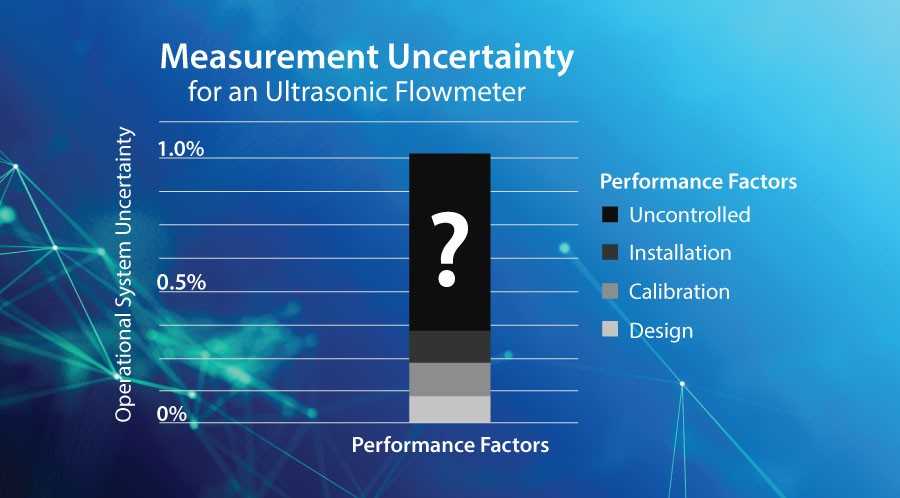Accuracy and Uncertainty in Measurements
Accuracy and Uncertainty in Measurements
Process control systems involve measurement of a number of parameters outcome of which is reflected in control action taken by the system. Therefore correctness of measurement has utmost importance and manufacturer of process measurement instruments is committed to ensure and provide accuracy that is claimed to be.
Accuracy and uncertainty closely affect the performance but unfortunately, these terms are often used inappropriately in specifications and thus can be misguiding. Therefore, it is essential to know the reference of these terms. When mentioned in percentage it is important to know whether it is based on full scale (FS) or actual reading (AR).
Let’s consider an example of the ultrasonic flow meter to understand its performance dependencies. Ultrasonic flow meters are widely used in pipe flow measurement, custody transfer, and flow survey. These meters are considered to be advantageous over conventional flow meters. The ultrasonic metering technique works on the physical characteristic of a sound wave that changes frequency when it gets reflected by particles in motion in process media. Hence, the performance of ultrasonic flow meters depends on two major factors: the nature of the process fluid and the meter’s linkage.
It requires an acoustically conductive process fluid through which a sound wave can be transmitted and its reflections can be detected. Linkage of the meter is nothing but the connection between the adjacent mediums. For example, a linkage between the transducer – pipe wall, pipe wall – lining (if present) and lining – process fluid. Unlike clamp-on transducers, wetted ones have lesser linkage as they are in direct contact with process media. This makes wetted transducers yield superior results. Neglecting the reference error, measurement uncertainty has two factors, namely precision error and systematic error. The precision error also termed as random error completely depends on the quality of the vendor’s hardware. It is expected and considered that the instrument is constructed and tested carefully under controlled environment in a laboratory.
The accuracy and uncertainty involved in measurement are mentioned in an instrument’s specifications. It is impossible to replicate the operating conditions of a lab in an actual field where the instrument is installed. Here comes the second error, called systematic error. It is introduced in the measurement because of various practical factors and working conditions involved in an actual field of installation. Some of the factors include pipe material, bonding of liners if present, pipe coating, pipe eccentricity, flow profile, and environmental factors. The systematic error may add up to 5% FS of the specified uncertainty of the measurement.
Therefore the performance of ultrasonic flow meter relies on the following factors
- Transducer Installation: Wetted or clamp-on
- Working Principle: Time-of-flight (TOF) or Doppler
- Required Rangeability
Typically, the accuracy of wetted, TOF flow meter is 1% FS. The reading accuracy of the actual flow depends on the ration of the maximum and minimum flow to be detected which is rangeability. Above meter will provide the accuracy of 2% AR at 50% flow and 5% AR at 20% flow. Doppler device may double the error and even a clamp-on unit can increase the error to twofold.
Conclusion: Accuracy and uncertainty are the crucial factors of measurement in the process control industry. Understanding its significance and effects on process environment is important. Factors like a design, working conditions, and type of instrument have a straight effect on the performance. Wise selection of these instruments would ensure the expected outcome.

